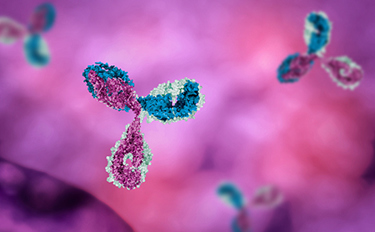Non-Affinity Chromatography Resin Alternative For Capture Purification Of Antibodies
By Payal Khandelwal and Mark Snyder

Antibody purification workflows typically involve three steps consisting of capture, intermediate, and polish chromatography. The capture purification step is primarily tasked with eliminating bulk impurities from the feedstream and increasing the concentration of the target biomolecule in the resulting eluate. Protein A affinity chromatography, which is commonly used for capture purification, generally meets these requirements. It provides high purity in a single step and is highly selective since only the Fc region of the antibody can bind to the Protein A ligand.
However, other requirements must be met if the antibody is to be used for therapeutic purposes. For biosimilars, one crucial requirement is cost efficiency. Affinity-based resins are expensive and not cost-effective, especially for biosimilars. In addition, Protein A does not efficiently capture molecules like IgMs or certain IgG subclasses, bispecific monoclonal antibodies, or fusion constructs. In addition, Protein A possesses low base stability, low binding capacity, and leaches ligand into the process stream.
Click Here For Nuvia S Resin Product Information
To overcome these limitations, we propose the use of Nuvia S Cation Exchange Resin for the capture step. Cation exchange (CEX) chromatography is shown to provide high specificity and scalability, is significantly less expensive than Protein A, and can be used at high flow rates to facilitate rapid processing and high productivity. This article shows the value of using Nuvia S for capture purification of antibodies with some examples.
Get unlimited access to:
Enter your credentials below to log in. Not yet a member of Bioprocess Online? Subscribe today.
